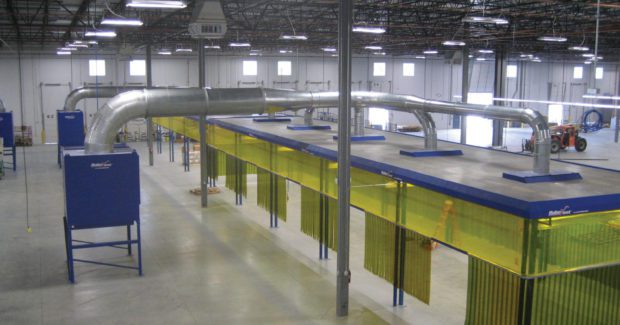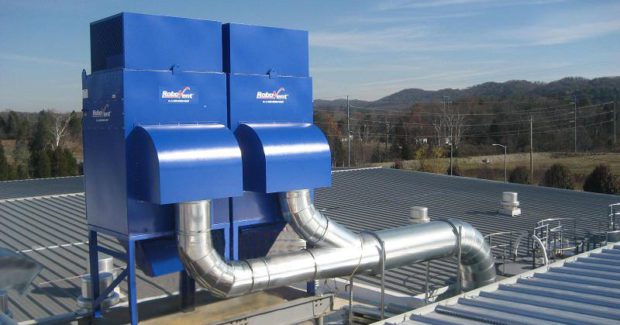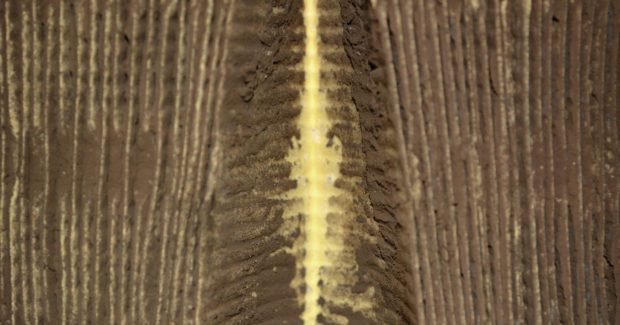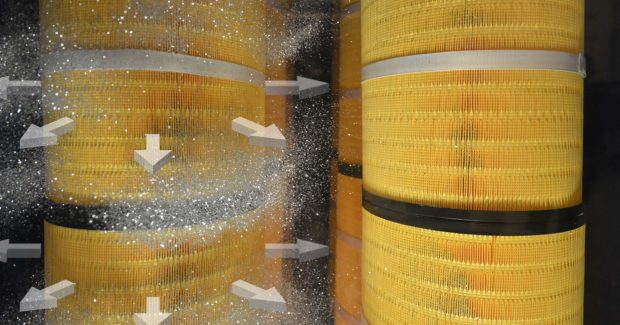What’s the True Cost of Clean Air?
You know the price of your ventilation or dust collection equipment, but do you really understand all of the ongoing expenses involved in maintaining indoor air quality for your shop? Time for a sanity check.
Posted: June 10, 2016
How much are you spending on clean air?
Some of the costs are easy to see: You know the price of your ventilation or dust collection equipment, but the initial equipment costs are only half the story. To understand the true costs of maintaining your indoor air quality, you need to examine the total cost of ownership of your equipment. This means looking at the hidden costs that include energy expenditures, filters, maintenance time and production downtime. Planning an air quality system is, in many ways, a balancing act: energy use vs. filter costs, maintenance time vs. equipment life, initial equipment costs vs. ongoing expenditures. The trick is to find the right balance between all of these elements to find the most efficient and cost effective way to meet your long-term goals.
ENERGY COSTS
One of the first decisions to be made when designing an air quality remedy is exhaust vs. filtration. An exhaust and makeup air system, which simply vents bad air out the roof and pulls fresh air back into the building, is the simplest and cheapest to install. However, as you blow dirty air out, you are also releasing expensively heated or cooled factory air. Fresh air that is brought in must be heated or cooled to indoor temperatures. In hot summer months or frigid winter weather, this can add considerably to your total heating and cooling costs. Over time, the money “saved” by selecting the cheapest ventilation option goes right back out through the roof.
A dust collection system that filters and returns air to the facility is much more energy efficient over time – and it will also keep your facility in line with air pollution regulations. These systems cost more money up front, but will avoid the expense of reheating or cooling large amounts of makeup air, and may also save you big money down the road if future regulations require filtration in order to meet environmental standards. There are also energy and cost balances to consider when choosing between different filtration options for your facility. One of the most important is the volume of air being moved, which is controlled by the equipment size and blower speed. You must maintain enough airflow for optimal capture efficiency. Anything beyond that is wasted energy. Your airflow needs depend on the volume of particulate produced, the size and type of particulate, your facility size and layout, and your ultimate air quality goals.
Maintaining the appropriate airflow will take more energy over time as filters become loaded with particulate (more on filters in the next section). Some plants choose to set their blower speed higher from the beginning so that proper airflow is maintained as the filters become more clogged. However, this means you are spending more energy than needed at the beginning of the cycle when the filters are clean. A blower with a variable frequency drive (VFD) can counteract this and save energy over time. Dust collection equipped with VFD can automatically sense filter loading and adjust the speed of the blower to compensate – which can translate into energy savings of up to 40 percent.
New technologies such as the eQ system can even automatically turn equipment on or off in response to air quality so that you’re not paying to run dust collectors when they aren’t needed. Tying equipment use directly to air quality readings is ideal for factory settings where particulate levels vary widely over the course of a shift or a week.
FILTER LIFE
Replacement filters are one of your biggest ongoing costs for your dust control system, and the one you’re most likely to notice. Equipment that is too small for the size of your application or the amount of particulate you produce will cost you in the long run through reduced filter life. One of the biggest factors impacting filter life is the “air-to-cloth ratio.” This is the ratio of filter media to the amount of air being pushed through, measured in cubic feet of air per minute (cfm). The higher the air-to-cloth ratio (meaning smaller or fewer filters for the air you are moving through them), the deeper particulate is driven into the media. Instead of settling on the surface where it can be easily shaken off, particulate rapidly clogs the filters, reducing their life and increasing the energy required to move air through them.
Other factors that impact filter life include:
- Filter cleaning: An automated mechanism that periodically pulses or shakes the filters will significantly lengthen filter life by shaking dust off the outside of the filters into the collection bin before it becomes entrapped in the filter media. Technologies such as the Dynamic Pulse® system makes this process more efficient by pulsing individual filters sequentially so that dust does not become re-entrained onto nearby filters. This can increase filter life by 30 percent to 50 percent.
- Orientation: Vertical filters last longer than filters that are installed horizontally, because dust can be more easily pulsed off the filter and does not settle onto filters below.
- Filter media: It’s important to select the right filter media for your application. Filter media will depend on the size, type and volume of your particulate.
MAINTENANCE TIME
When it comes to maintenance, time is money. Dust collection equipment that requires frequent filter changes and other preventative maintenance may mean adding additional staff. If production lines must be shut down in order to maintain equipment, those costs must be taking into account as well. In some cases it may be more cost efficient to outsource ongoing preventative maintenance back to the experts. PM for air quality equipment can be easily overlooked or pushed down on the priority list due to more critical production line issues. Eventually, however, this will come back to haunt you in terms of shorter filter and equipment life, higher energy costs, poor air quality and unexpected shut downs and delays. Scheduling regular PM with an equipment supplier may actually be cheaper than trying to do it in-house and will ensure that your equipment is always running optimally.
Another option is to look for equipment that makes maintenance decisions for you. For example, the eTell® control system monitors dust collector performance, automatically adjusts settings to optimize the equipment, and tells operators when to order and replace filters based on actual performance rather than set time periods.
FINDING THE RIGHT BALANCE
Understanding the initial, ongoing and hidden costs of clean air isn’t always easy. An air quality systems engineer can help you evaluate your facility, processes and air quality goals to help you find the right balance. For example, we use computer modeling to evaluate factors such as particulate size and volume, airflow patterns in the facility and other variables. Engineers can use the model to try different approaches virtually and select the optimal system design for each facility. This approach avoids over- or under-engineering to find the solution that produces the desired air quality outcomes in the most efficient and cost effective way possible.
Choosing the right air quality remedy doesn’t have to be painful. But it does require looking beyond initial equipment costs and thinking about the big picture. Making the right choice up front will make a big difference to your bottom line – and your employees – in the future.



















